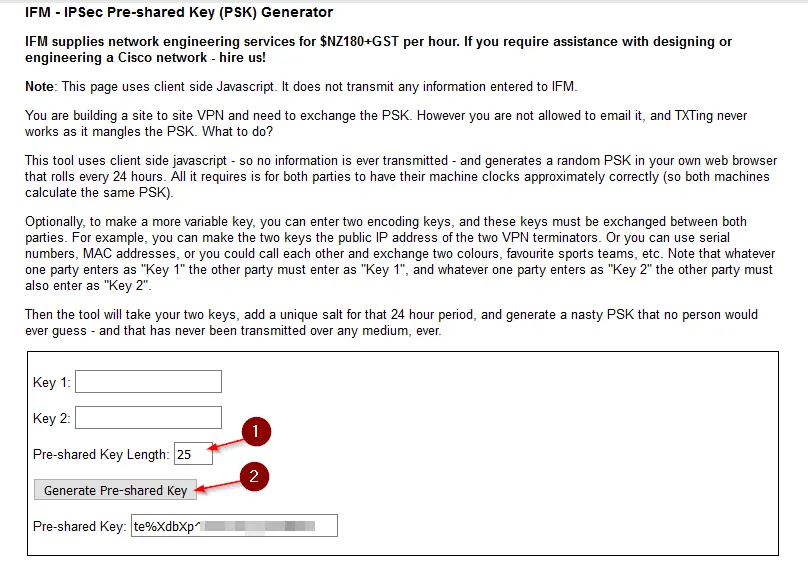Cryptographic Key Generation From Voice
- Transfer Unit Cryptographic Key
- Cryptographic Key Generation From Voice Free
- Cryptographic Key Generation From Voice 2016
- Cryptographic Key Management System
- Cryptographic Key Lifecycle
- Cryptographic Key Types
Create both asymmetric and symmetric cryptographic keys.

The solution is to use a new generator for each public key, but keep the private key the same. Hashmaps dont work on encrypted input, only plaintext (Or, two encrypted values which are the same, but that ruins the point because now you can link them). $endgroup$ – Nicholas Pipitone Nov 29 '18 at 19:07. We propose a technique to reliably generate a cryptographic key from a user's voice while speaking a password. The key resists cryptanalysis even.
Towards Voice Generated Cryptographic Keys on Resource Constrained Devices. In Proceedings of the 11th USENIX Security Symposium, August, 2002.(. Lucas Ballard, Seny Kamara, Michael K. Reiter, and Fabian Monrose. Towards Practical Biometric Key Generation with Randomized Biometric Templates. Cryptographic key generation from voice Abstract: We propose a technique to reliably generate a cryptographic key from a user's voice while speaking a password. The key resists cryptanalysis even against an attacker who captures all system information related to generating or verifying the cryptographic key.
Overview
Very often, you retrieve a key from an identity, a certificate, or the keychain, or with some other method described in Getting an Existing Key. Sometimes, however, you need to create your own keys.
Creating an Asymmetric Key Pair
An asymmetric cryptographic key pair is composed of a public and a private key that are generated together. You distribute the public key freely, but you keep the private key secret. One or both may be stored in a keychain for safekeeping.
You create an asymmetric key pair by first creating an attributes dictionary:
At a minimum, you specify the type and size of keys to create using the kSecAttrKeyType and kSecAttrKeySizeInBits parameters, respectively. The above example indicates 2048-bit RSA keys, though other options are available.
You then optionally add a kSecPrivateKeyAttrs parameter with a subdictionary that characterizes the private key. By assigning a value of true to the private key’s kSecAttrIsPermanent attribute, you store it in the default keychain while creating it. You also specify the kSecAttrApplicationTag attribute with a unique NSData value so that you can find and retrieve it from the keychain later. The tag data is constructed from a string, using reverse DNS notation, though any unique tag will do.
You could add a kSecPublicKeyAttrs attribute to the attributes dictionary, specifying a distinct tag and keychain storage for the public key. However, it’s typically easier to store only the private key and then generate the public key from it when needed. That way you don’t need to keep track of another tag or clutter your keychain.
Transfer Unit Cryptographic Key
For a complete list of available key attributes, see Key Generation Attributes.
Cryptographic Key Generation From Voice Free
Note Diablo 2 lod cd key battlenet generator.
Be sure that you don’t generate multiple, identically tagged keys. These are difficult to tell apart during retrieval, unless they differ in some other, searchable characteristic. Instead, use a unique tag for each key generation operation, or delete old keys with a given tag using SecItemDelete(_:) before creating a new one with that tag.
You then call the SecKeyCreateRandomKey(_:_:) function with the attributes dictionary:
If the function fails to create a key, as indicated by a NULL return value, it fills in the error parameter to indicate the reason for failure. Otherwise, the key reference points to a new private key that’s ready for use. The key is also stored in the default keychain, from where you can read it later, as described in Storing Keys in the Keychain. If you need the corresponding public key (now or later), call the SecKeyCopyPublicKey(_:) function with the private key reference:
In Objective-C, when you’re done with these key references, however you obtained them, you are responsible for releasing the associated memory:
Cryptographic Key Generation From Voice 2016
Creating a Symmetric Key

Asymmetric key cryptography is useful because it enables secure communication between two players who don’t share a secret ahead of time. However, it’s not ideal for bulk data transfer, because it’s computationally expensive and because it operates on small, fixed-sized chunks of data. Symmetric key cryptography, on the other hand, is computationally efficient. It allows you to handle data streams of arbitrary length but requires that both sender and receiver, and no one else, know the secret key.
Cryptographic Key Management System
To get the best of both worlds, you often use asymmetric cryptography to communicate a symmetric cryptographic key that you then use for bulk data transfer. When you do this with the certificate, key, and trust services API, you don’t explicitly create the symmetric key yourself. Instead, you call SecKeyCreateEncryptedData(_:_:_:_:) to create a symmetric key for you. This function creates the symmetric key, uses it to encrypt your data, and then encrypts the key itself with the public key that you provide. It then packages all of this data together and returns it to you. You then transmit it to a receiver, who uses the corresponding private key in a call to SecKeyCreateDecryptedData(_:_:_:_:) to reverse the operation. For more details, see Using Keys for Encryption.
See Also
Cryptographic Key Lifecycle
Storing Keys in the Secure EnclaveCreate an extra layer of security for your private keys.
func SecKeyCreateRandomKey(CFDictionary, UnsafeMutablePointer<Unmanaged<CFError>?>?) -> SecKey?func SecKeyCopyPublicKey(SecKey) -> SecKey?Gets the public key associated with the given private key.
Key Generation AttributesCryptographic Key Types
Use attribute dictionary keys during cryptographic key generation.
